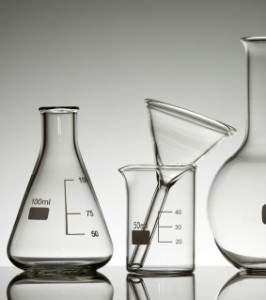by gabriel_sales | Feb 28, 2014
Marketing Automation may prove to be the way to save companies leads and money
Everybody wants more leads.
In a recent marketing survey from BuyerZone, it was found that 56% of B2B companies strongly disagree with the statement that they’re getting enough leads. The same survey found that 45% of B2B companies have been increasing their lead generation budget year after year.
There are several reasons why this is happening. The first is that cold calling is about half as effective as it used to be, with call-to-connect ratios dropping by 50% or more in recent years. Cold calling still works for lead gen, but it costs twice as much to achieve the same results. Another reason many B2B companies think they need more leads is that they don’t have a system in place to effectively work and manage the leads that they already have.
The BuyerZone survey found some interesting relationships between B2B companies’ use of technology and their perception of lead volume and quality:
“B2B marketers who agree with the statement that the leads they receive are of reasonable quality are:
- More likely to be using a CRM (89%)
- Use marketing automation (53%)
- Have an understanding that they’re getting enough leads (53%)
Compare that to those who disagree that the leads they receive are of high quality and you see that only:
- 78% use a CRM system
- 29% use marketing automation
- More than 90% are adamant that they are not getting enough leads”
Looking at the data, it seems many that companies that use a CRM in conjunction with a marketing automation system receive higher quality leads and therefore feel that they need less of them to be successful. Conversely, companies that feel they do not have the lead volume or lead quality they need are much less likely to use both a CRM and marketing automation platform in their lead generation efforts.
To us, this makes a lot of sense. If a company does not have a CRM and/or marketing automation system, they likely are not tracking their leads or nurturing them in any way. With no visibility into their leads’ web activity and engagement with their marketing content, how would these companies know whether or not they have enough leads or what quality they are?
The lesson to be learned? BuyerZone explains:
“In a nutshell, while the cost of CRM and/or Marketing Automation isn’t insignificant, it might end up saving companies money in the end.”
By leveraging the right technologies, you can eliminate the constant lead quantity problem by replacing it with a solution that improves lead quality. This way, you can stop spending more and more on lead generation and can instead focus resources on nurturing leads you actually know are interested.
To learn more about sales pipeline management and lead nurturing with the use of marketing technologies, read “An Alternative to Getting More Leads in 2014”. Feel free to contact us with any questions.
by Glen Springer | Feb 26, 2014
 As a salesperson, knowing who to call and having the ability to control the conversation are key to the outcome of a call. This is where a well-run marketing automation system, content management system and lead scoring system pays off for a sales person.
As a salesperson, knowing who to call and having the ability to control the conversation are key to the outcome of a call. This is where a well-run marketing automation system, content management system and lead scoring system pays off for a sales person.
In a retail setting, it takes a keen eye and well developed senses on behalf of a salesperson to understand what customers are there to buy and who is there ‘just shopping’. The best salespeople seem to have a third eye telling them whom to approach and what tactic to use. In Malcom Gladwell’s book, The Tipping Point, he explains that these superior salesmen know that “nonverbal cues are as or more important than verbal cues” and, “subtle circumstances surrounding how we say things may matter more than what we say.”
People who are able to sell based on subtle cues are really just good at picking up buying signals early. Most salespeople just go from person to person asking, “Can I help you?”—this essentially equates to cold calling. When your organization relies on an inside sales team, you need to be like Gladwell’s superior salesperson, not an average ‘greeter’.
But, how do you do this over the phone when you can’t really interact with customers in a way that allows you to pick up all their subtle buying signals?
This has always been a problem with phone sales and cold calling. Salespeople are left wondering:
- Who’s actually interested?
- What are they interested in?
- What features are they most interested in?
- When should I call them back?
- How do I know if they really want to talk to me?
So, how do you find the answers to these questions with limited visibility?
Answer:
You see what your prospects are doing via your marketing automation system. Marketing automation gives you the ability to know who to call, which is probably the biggest success factor on a sales floor—it is what separates the best from the bunch. Marketing automation also gives you insight into when they want to hear from you, what they want to talk about, what you should share, what you shouldn’t share, etc. With a marketing automation platform, you have the information at hand to gain the respect of the prospect and have a real conversation, rather than a cold call and hearing, “No thanks, I’m just looking” or “ Who are you?” or “What is this about?”.
Another trick of great salespeople involves resources and control. Most successful sales reps know when to move on from a prospect that is not going to transact, allowing them to control when the conversation ends rather than wasting their time educating. Marketing automation can also help automate this often times tough skill by giving you the ability to see if your prospect is opening and sharing content or if he or she is just blowing smoke and is not really ready to transact.
For more on using marketing automation for sales, read “A Twist on Selecting a Marketing Automation Platform.” Feel free to contact us with any questions.
by Glen Springer | Feb 24, 2014
 It is imperative that your marketing team be data-driven. Budget dollars are tight and need to be accurately spent. Having clear data on how each of your marketing campaigns are performing is essential to being able to forecast sales, scale your campaigns/operations and re-allocate budget from low performing to high performing campaigns.
It is imperative that your marketing team be data-driven. Budget dollars are tight and need to be accurately spent. Having clear data on how each of your marketing campaigns are performing is essential to being able to forecast sales, scale your campaigns/operations and re-allocate budget from low performing to high performing campaigns.
At Gabriel Sales, our entire organization is data-driven, including the marketing team, who manages quantitative reporting and scorecards for both clients and internally. The key performance metrics we traditionally measure are the following:
- Inbound Traffic by source
- Web form conversions and inbound calls by source (Total Prospects)
- Prospects who want to talk (Sales Accepted Leads aka SALs)
- Prospects who have a project need and budget (Sales Qualified Lead aka SQLs)
- Proposals
- Closed deals
- Revenue
If you notice, we are accurately tracking the entire funnel. We do this using a combined integration of web analytics, marketing automation software, CRM software and experienced data analysts. By calculating conversion rates from previous stage (e.g. what percentage of proposals close or what percentage inbound traffic converts to web forms), we can better forecast sales and allocate spend to marketing campaigns to best enhance our marketing and sales funnel’s performance.
Additionally, with marketing automation software at the crux of our marketing and sales operations, we can see what traffic/lead conversion sources are most likely to convert to proposal and closed deals. This helps us scale those marketing campaigns that have the best conversion performance.
Lastly, we can see what sources have the poorest funnel performance and reduce or eliminate spending on those campaigns (as long as we’ve tested enough to be sure the campaign is not viable for the particular product/service we are promoting).
This level of reporting built-in to your company is no longer just a competitive advantage but is a key to sustaining and growing your business in today’s market.
For more on increasing B2B sales funnel productivity, read “The Value of Marketing Automation in the B2B Sales Process”. Feel free to contact us with any questions.
by Glen Springer | Feb 24, 2014
 It is imperative that your marketing team be data-driven. It’s also imperative your sales funnel effectiveness is turning into sales. Budget dollars are tight and need to be accurately spent. Having clear data on how each of your marketing campaigns are performing is essential to being able to forecast sales, scale your campaigns/operations and re-allocate budget from low performing to high performing campaigns.
It is imperative that your marketing team be data-driven. It’s also imperative your sales funnel effectiveness is turning into sales. Budget dollars are tight and need to be accurately spent. Having clear data on how each of your marketing campaigns are performing is essential to being able to forecast sales, scale your campaigns/operations and re-allocate budget from low performing to high performing campaigns.
At Gabriel Sales, our entire organization is data-driven, including the marketing team, who manages quantitative reporting and scorecards for both clients and internally. The key performance metrics we traditionally measure are the following:
Sales Funnel Effectiveness KPIs
- Inbound Traffic by source
- Web form conversions and inbound calls by source (Total Prospects)
- Prospects who want to talk (Sales Accepted Leads aka SALs)
- Prospects who have a project need and budget (Sales Qualified Lead aka SQLs)
- Proposals
- Closed deals
- Revenue
If you notice, we are accurately tracking the entire funnel to ensure the sales funnel effectiveness. We do this using a combined integration of web analytics, marketing automation software, CRM software and experienced data analysts. By calculating conversion rates from previous stage (e.g. what percentage of proposals close or what percentage inbound traffic converts to web forms), we can better forecast sales and allocate spend to marketing campaigns to best enhance our marketing and sales funnel’s performance.
Additionally, with marketing automation software at the crux of our marketing and sales operations, we can see what traffic/lead conversion sources are most likely to convert to proposal and closed deals. This helps us scale those marketing campaigns that have the best conversion performance and sales funnel effectiveness.
Lastly, we can see what sources have the poorest funnel performance and reduce or eliminate spending on those campaigns (as long as we’ve tested enough to be sure the campaign is not viable for the particular product/service we are promoting).
This level of reporting built-into your company is no longer just a competitive advantage, but is a key component to sales funnel effectiveness, and sustaining and growing your business in today’s market.
For more on increasing B2B sales funnel productivity, read “The Value of Marketing Automation in the B2B Sales Process”. Feel free to contact us with any questions.
by gabriel_sales | Feb 21, 2014
 Marketers obviously have good intentions with their content marketing strategy, but what they produce often ends up missing the mark.
Marketers obviously have good intentions with their content marketing strategy, but what they produce often ends up missing the mark.
For example, you may only care about the business benefits of a solution, but the content you are sent is a high level technical overview. Or, you are just trying to quickly learn the basics about something, and the only content offered is a 20-page white paper.
Experiences like this can be frustrating for the B2B buyer. To them, it seems that there is a disconnect between their needs and your solution. In this day and age, if buyers can’t find the answers they want with relative ease, they are moving on to your competitor.
To solve this problem, here are three steps to creating highly engaging B2B content that converts:
1. Build buyer persona/personas for each type of buyer you sell to.
The first step is taking the time to truly understand your buyer. In B2B sales, this often means understanding the multiple types of buyers that are now involved in the sales process. Each of these buyers may have different needs and concerns, and you need to understand these concerns completely before creating any content. For example, while the CEO may care most about P&L, the HR rep and the IT manager have entirely different concerns.
2. Map out your sales cycle into stages, and create content to match.
With your buyer personas in mind, the next step is mapping out your buying cycle. To keep things simple, break it up into three stages: education, verification and closing. Then, create content for each stage for each of your buyer personas. Ask yourself, if I were an IT manager and knew nothing about X product/service, what would I need to see to feel educated on the basics? Ask yourself the same for the CEO, the marketer or whoever else is involved in the buying process. Then move on to the verification stage, and ask yourself what each type of buyer persona would need to see to verify that you are the best choice among the many alternatives. Again, remember that verification for an executive may look entirely different than verification for someone in marketing. Finally, do the same for closing stage.
3. Use marketing automation to push content at appropriate times.
With your personas and content created, you can use your marketing automation platform to gauge what type of persona each prospect has and where he or she is in their particular buying cycle. By offering each prospect content that speaks to his or her most pressing needs at the appropriate time, your prospects will find your content genuine and valuable and will be much more likely to convert.
By following these steps, your prospects will feel like you understand them, which is the first stage in establishing trust. To learn more about creating quality B2B content, read “5 Reasons Your Content Isn’t Converting”. Please feel free to contact us with any questions.




 It is imperative that your marketing team be data-driven. It’s also imperative your sales funnel effectiveness is turning into sales. Budget dollars are tight and need to be accurately spent. Having clear data on how each of your marketing campaigns are performing is essential to being able to forecast sales, scale your campaigns/operations and re-allocate budget from low performing to high performing campaigns.
It is imperative that your marketing team be data-driven. It’s also imperative your sales funnel effectiveness is turning into sales. Budget dollars are tight and need to be accurately spent. Having clear data on how each of your marketing campaigns are performing is essential to being able to forecast sales, scale your campaigns/operations and re-allocate budget from low performing to high performing campaigns.
